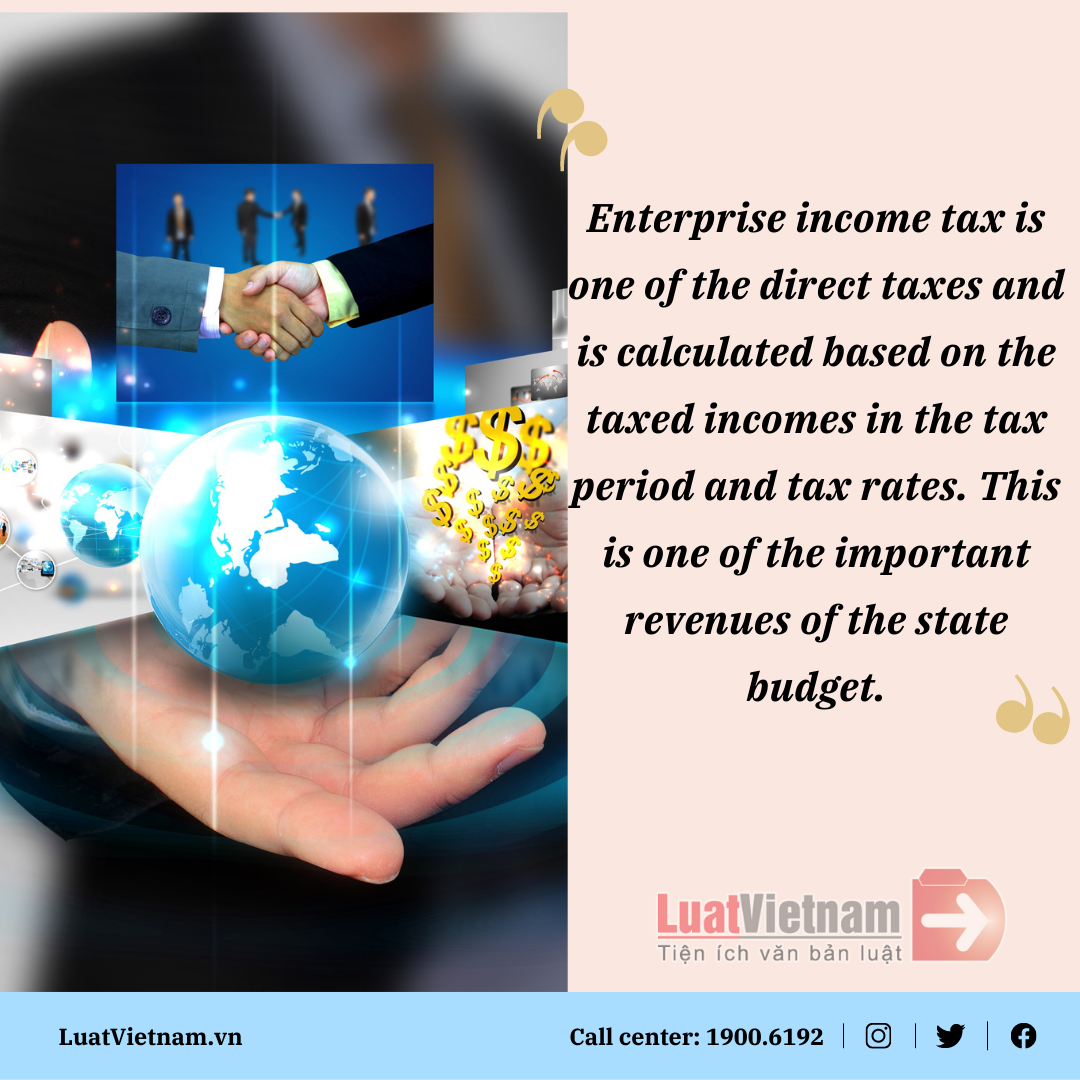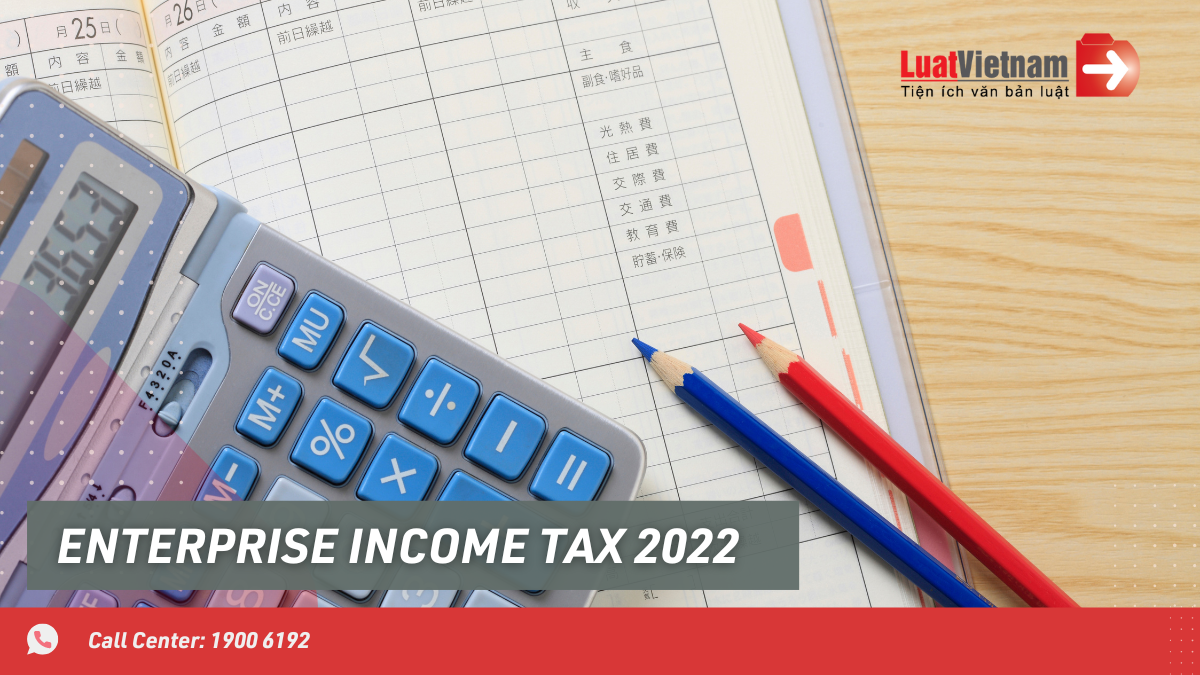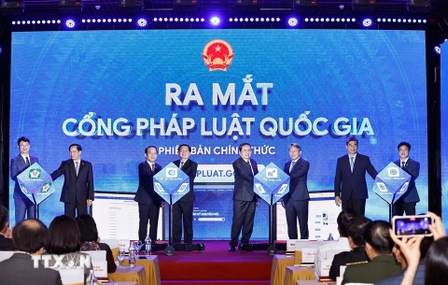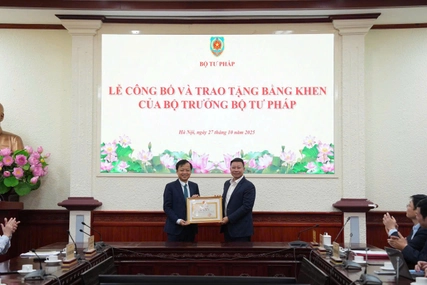Enterprise income tax is one of the direct taxes and is calculated based on the taxed incomes in the tax period and tax rates. This is one of the important revenues of the state budget.
- 1. Taxpayers of enterprise income tax
- 2. Calculation methods of EIT
- 3. How to define the turnover used for calculating taxable income?
- 4. Deductible expenses for determining taxable income
- 5. Non-deductible expenses for determining taxable income
- 6. Tax-exempt incomes
- 7. Other incomes
- 8. Deadlines for submission of tax declaration dossiers
1. Taxpayers of enterprise income tax
Mentioning enterprise income tax (EIT), everybody knows that taxpayers are enterprises. However, this is only the general definition because there are many other objectives besides enterprises.
Article 2, Law on enterprise income tax 2008 which is amended and supplemented in 2013 prescribes that taxpayers are defined as follows:
Taxpayers are goods and service production and business organizations which have taxable incomes under the provisions of this Law (below referred to as enterprises), including:
- Enterprises are established under Vietnamese law.
- Enterprises established under foreign laws (below referred to as foreign enterprises) with or without Vietnam-based permanent establishments.
- Organizations established under the Law on Cooperatives;
- Non-business units are established under Vietnamese law.
- Other organizations engaged in income-generating production and business activities.
* Enterprises having taxable incomes shall pay enterprise income tax as follows:
- Enterprises established under Vietnamese law shall pay tax on taxable incomes generated in and outside Vietnam.
Foreign enterprises with Vietnam-based permanent establishments shall pay tax on taxable incomes generated in Vietnam and taxable incomes generated outside Vietnam which are related to the operation of such establishments;
Foreign enterprises with Vietnam-based permanent establishments shall pay tax on taxable incomes generated in Vietnam which are not related to the operation of such permanent establishments
Foreign enterprises without Vietnam-based permanent establishments shall pay tax on taxable incomes generated in Vietnam.
* Resident establishments of a foreign enterprise mean production and business establishments through which the foreign enterprise conducts some or all production and business activities in Vietnam, including:
- Vietnam-based branches, executive offices, factories, workshops, vehicles, oil fields, gas fields, mines, or other sites for exploiting natural resources;
- Construction sites, construction, installation, and assembly works;
- Establishments providing services, including consultancy services provided via employees or other organizations or individuals;
- Agents for the foreign enterprise;

2. Calculation methods of EIT
* Formula of EIT
Pursuant to the Article 6, Law on enterprise income tax 2008, Article 5 of the Decree No. 218/2013/ND-CP, EIT is calculated as follow:
EIT = Taxed income in a tax period x Tax rate [1]
Therefore, taxed income in a tax period and tax rate must be known to calculate EIT, in particulars:
(1) Taxed income
Taxed income = Taxable income - (Tax-exempt income + Losses carried forward under regulations) [2]
Within that, taxable income shall be determined as follows:
Taxable income = (Turnover - Deductible expenses) + other incomes [3]
(2) Tax rate
In accordance with Article 10, Article 13, and Article 14 of the Law on enterprise income tax 2008, amended and supplemented in 2013 and Article 10 of the Decree No. 2018/2013/ND-CP, enterprises are subjected to the tax rate of 20%.
Besides, many other enterprises apply the higher tax rates such as enterprise of activities of prospecting, exploring and exploiting oil and gas and other precious and rare natural resources in Vietnam, or apply the tax rate incentives for high-tech enterprises so the tax rate is at the lower level.
* Step in the calculation of EIT
Tax rates are calculated in the steps as follows:
Step 1: Taxable revenue in the tax period, deductible expenses, other incomes
Step 2: Taxable income according to the formula [3]
Step 3: Tax-exempt incomes, carrying forward losses prescribed by laws
Step 4: Taxed income according to the formula [2]
Step 5: Payable EIT tax according to the formula [1]
Note: Here is the procedure for EIT calculation in accordance with law provisions, in reality, there are many more complicated steps when accountants enter data into the software that enterprises are using and send it to the tax agencies.
3. How to define the turnover used for calculating taxable income?
Pursuant to the Article 8, Decree No. 218/2013/ND-CP, turnover used for calculating taxable income is prescribed as follows:
- Turnover used for calculating taxable income is the total of sales, processing remunerations and service charges, including also subsidies and surcharges enjoyed by enterprises, regardless of whether money has been collected or not.
For enterprises declaring and paying value-added tax by the tax credit method, turnover used for calculating enterprise income tax is exclusive of value-added tax.
For enterprises declaring and paying value-added tax by the method of
calculation of tax based directly on added value, turnover used for calculating enterprise income tax is inclusive of value-added tax.
- The time of determining turnover used for calculating taxable income for goods sold is the time of transfer of the right to own or use goods to purchasers.
The time of determining turnover used for calculating taxable income for services is the time of completing the provision of services to purchasers or the time of making service provision invoices.
Turnover used for calculating taxable income in some cases is specified in Clause 3, Article 8, Decree No. 218/2013/ND-CP and Clause 3, Article 5 of Circular No. 78/2014/TT-BTC.
4. Deductible expenses for determining taxable income
Pursuant to Article 6, Circular No. 78/2014/TT-BTC (amended and supplemented by the Circular No. 119/2014/TT-BTC and the Circular No. 96/2015/TT-BTC), enterprises may deduct all expenses that fully satisfy the following conditions:
(1) Actual expenses arising in relation to production and business activities of enterprises.
(2) Expenses with adequate lawful invoices and documents as required by law;
(3) For expenses for purchase of goods or services with invoices valued at VND 20 million or more (VAT-inclusive prices) each, there must be non-cash payment documents.
Non-cash payment documents must comply with legal documents on value-added tax;
- In the case of the purchase of goods or services with invoices valued at VND 20 million or more each but at the time of recording expenses, enterprises have not yet paid any money and have no non-cash payment documents, enterprises may account for such expenses as deductible expenses for determination of taxable income.
If enterprises have no non-cash payment documents for such payment, they shall declare and reduce expenses for the value of goods or services without non-cash payment documents in the tax period.
If enterprises buy goods and services of business activities of enterprises and have invoices printed directly from computers under the legal provisions on invoices, in particular:
+ In case of purchase of goods or services with invoices valued at VND 20 million or more, enterprises shall base on invoices and use non-cash payment documents to calculate deductible expenses for determining taxable income.

5. Non-deductible expenses for determining taxable income
Clause 2, Article 6 of Circular No. 78/2014/TT-BTC (amended and supplemented by Article 4, Circular No. 96/2015/TT-BTC), non-deductible expenses for determining taxable income include:
+ Expenses failing to fully meet the conditions
+ Depreciation expense for fixed assets
6. Tax-exempt incomes
Pursuant to Article 8, Circular No. 78/2014/TT-BTC, a number of provisions are amended and supplemented by the Circular No. 151/2014/TT-BTC, Circular 96/2015/TT-BTC, incomes from below activities are exempted from EIT as follows:
- Incomes from cultivation
- Incomes from the provision of technical services directly for agriculture
7. Other incomes
Pursuant to Article 7, Circular No. 78/2014/TT-BTC, a number of provisions are amended and supplemented by Circular No. 151/2014/TT-BTC, Circular 96/2015/TT-BTC, other incomes include:
- Income from the transfer of capital or securities as guided in Chapter IV of the Circular 78/2014
- Income from the transfer of capital or securities as guided in Chapter IV of this Circular 78/2014.
- Income from the transfer of investment projects; transfer of the right to participate in investment projects; transfer of the right to explore, exploit and process minerals as prescribed by law.
- Income from asset ownership or use rights, including also copyright
royalties in any form paid for asset ownership or use rights; royalties from intellectual property rights; and income from technology transfer in accordance with law
- Income from asset lease in any form
- Income from transfer or liquidation of assets (excluding real estate) and other valuable papers.
- Income from deposit or loan interests, including also interests on deferred and installment payments, credit guarantee charges, and other charges under loan provision contracts
- Income from the sale of foreign currency which equals total proceeds from the sale of foreign currency minus (-) total buying price of the sold foreign currency amount.
- Income from exchange rate difference
- Recovered bad debts which have been written of
- Payable debts of unidentifiable creditors
- Previous years omitted incomes from production and business activities, which are now discovered
- If fines or compensations received by enterprises from their partners for contract breaches or rewards for the good realization of commitments under contracts are higher than those paid by these enterprises for their contract breaches (these fines are other than those paid for administrative violations in accordance with the law on handling of administrative violations), the remainder after the clearing may be included in other income
- Difference resulting from the re-valuation of assets in accordance with law for capital contribution or asset transfer upon enterprise split, separation, consolidation, merger, or transformation (except for equitization, arrangement, and renewal of 100% state-owned enterprises.
- Donations and gifts in cash or in kind; income received in cash or in kind from financing sources; income received from marketing support, expense support, payment discount, promotional prizes, and other supports.
- Sums of money, property, and material benefits received by enterprises from organizations and individuals as agreed or contracted in accordance with the civil law when enterprises had over their land areas for relocation of their production and business facilities, after subtracting related expenses, such as expenses for relocation (transportation and installation costs), the residual value of fixed assets and other expenses (if any).
- Amounts pre-deducted as expenses but left unused or not fully used in the deduction period which is not accounted by enterprises as a decrease in expenses; refunded provisions for warranty of construction works.
- Incomes related to goods sale or service provision which are not included in turnover such as bonus for quick clearance of ships, tips for food and drink catering or hotel services, after subtracting expenses for generating such incomes
- Income from the sale of scraps and discarded products, after subtracting recovery and sale expenses.
- Refunded import duty or export duty amounts on actually imported or exported goods right in the year of enterprise income tax finalization may be accounted as deductible expenses in that year.
- Incomes from the contribution of equity capital, and contribution of capital to joint ventures or economic associations at home which are divided from pre-enterprise income tax incomes.
- Income received from overseas goods production and trading or service provision
- Other incomes as provided by law
8. Deadlines for submission of tax declaration dossiers
Pursuant to Article 44 of the Law on tax administration 2019, the deadline for submitting tax declaration dossiers is as follows:
- The deadline for submission of monthly or quarterly tax declaration: The last day of the first month of the quarter following the quarter in which the tax liability arises.
- The deadline for submission of annual tax declaration dossiers: The last day of the third month from the end of a calendar year or fiscal year for annual tax finalization dossiers.
Here are the primary regulations on enterprise income tax that accountants and enterprises should know in the production and business process.










